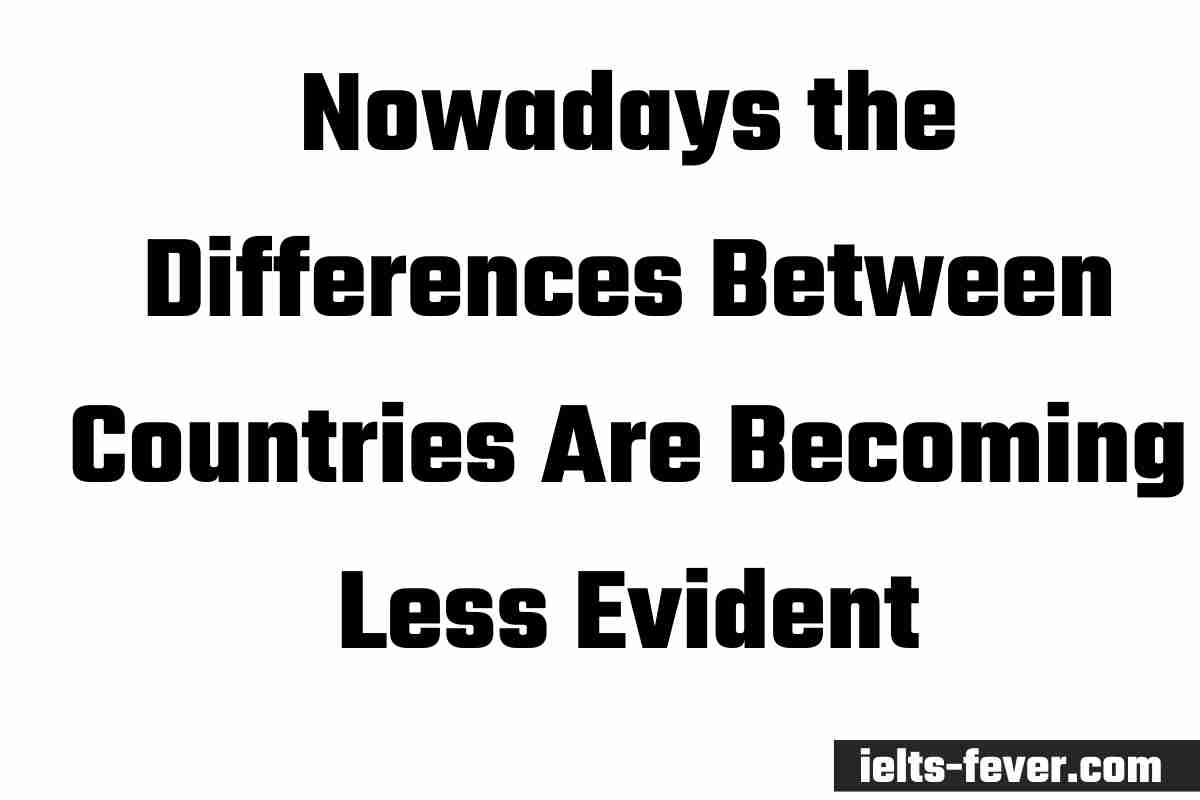Nowadays the Differences Between Countries Are Becoming Less Evident because people follow the same media. Do the advantage of this trend outweigh the disadvantages?
Sample 1 Nowadays the Differences Between Countries Are Becoming Less Evident
In recent times, people across the globe have access to the same media platforms, which has resulted in fewer differences between countries. While there are certain advantages to this trend, it also comes with several disadvantages.
One of the primary advantages of this trend is that it has brought people closer together by facilitating communication and the exchange of ideas. People from different countries and cultures can now interact with each other through social media platforms, which has fostered greater understanding and empathy. Additionally, the widespread availability of information has led to increased awareness of global issues, making it easier for people to come together and address common challenges.
However, this trend also comes with certain disadvantages. One of the major disadvantages is that it can lead to the loss of cultural diversity. As people consume the same media, there is a risk that local cultures and traditions will become diluted and homogenized. This can lead to the loss of unique cultural practices and identities, which is a significant loss for the global community.
Moreover, the prevalence of fake news and misinformation is another major disadvantage of this trend. As people consume news and information from the same sources, there is a risk that inaccurate information will spread rapidly and widely, leading to confusion and distrust. This can have serious consequences for individuals, communities, and nations, as it can impact decision-making and social cohesion.
In conclusion, while the trend towards a global media culture has certain advantages, such as increased communication and awareness, it also comes with significant disadvantages, such as the loss of cultural diversity and the prevalence of misinformation. Therefore, it is essential that we find ways to leverage the advantages of this trend while mitigating the negative consequences, to ensure that we create a more interconnected and inclusive global community.
Sample 2 Nowadays the Differences Between Countries Are Becoming Less Evident
In recent years, people across the globe have been following the same media, which has led to fewer differences between countries. While there are advantages to this trend, the disadvantages should also be considered.
One of the advantages of this trend is that it fosters greater global understanding and empathy. As people from different countries interact on social media platforms, they can learn about each other’s cultures and traditions, which can lead to greater tolerance and appreciation. Additionally, the widespread availability of information has led to increased awareness of global issues, which can facilitate collaboration and problem-solving.
However, there are also several disadvantages to this trend. One of the primary concerns is the potential loss of cultural diversity. As people consume the same media, there is a risk that local cultures and traditions will become homogenized, which can lead to the loss of unique cultural identities.
Moreover, the prevalence of misinformation is a major concern. As people consume news and information from the same sources, there is a risk that false information will spread quickly and widely, leading to confusion and distrust. This can have serious consequences for individuals, communities, and nations, as it can impact decision-making and social cohesion.
In conclusion, while there are advantages to the trend towards a global media culture, such as greater understanding and awareness, it also comes with significant disadvantages, such as the loss of cultural diversity and the prevalence of misinformation. It is important to find ways to leverage the benefits of this trend while mitigating the negative consequences to ensure that we create a more interconnected and inclusive global community. It is also important to promote critical thinking skills and media literacy to help people navigate the complex media landscape and avoid the negative consequences of misinformation.
Follow us on Facebook

